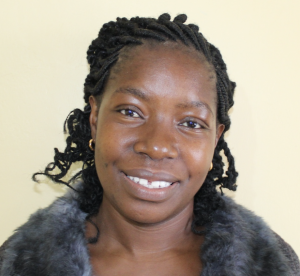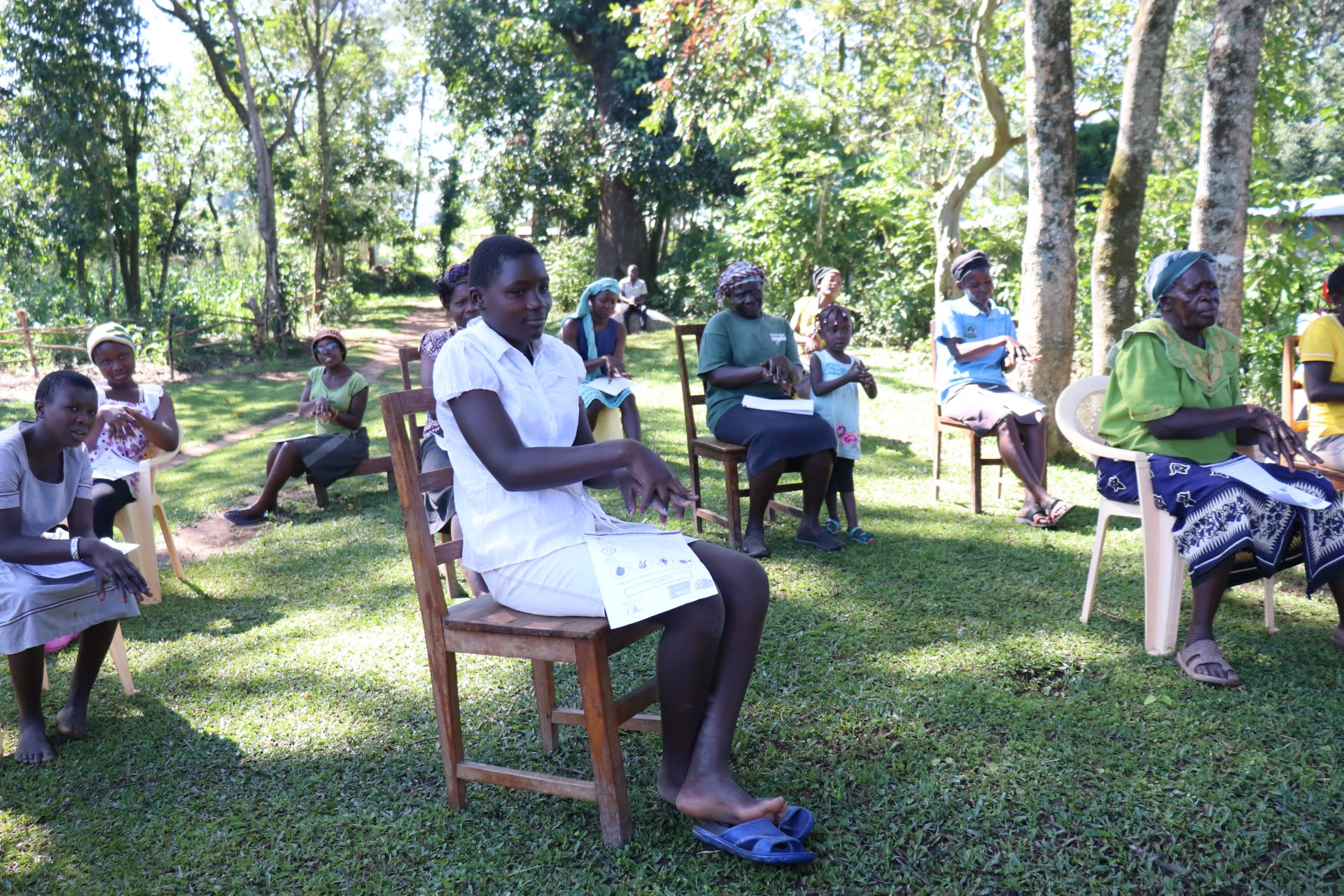Beatrice Mukhola, a 38-year-old farmer from Buyangu, was visiting nearby Kambiri Community when she passed by Sachita Spring - where we carried out a spring protection earlier this year. She noticed the change at the spring and asked people fetching water from it how on how they managed to protect their spring.
The people referred her to us and she contacted our office to consider protecting her community's spring. We dispatched our teams to visit Mukhola Spring and realized that it was viable for protection.
"If you protect this spring our livelihood and health will improve tremendously," said Mrs. Mukhola to us.
The 236 community members who use the spring have tried to improve it by fixing a pipe at the end to make it easier to fetch water. However, the water is open therefore prone to contamination from the environment. There are water crabs and frogs in the water source. The water from the spring is not safe for drinking, but the community members drink it because they don't have an alternative source of clean and safe water.
People fall ill frequently as a result of consuming water from the spring. Children and the elderly are the most affected since their immune system is weak. They suffer from waterborne and water-related diseases like typhoid, diarrhea, and malaria, which sometimes leads to death. As a result, a lot of money is spent on hospital bills and funeral arrangements instead of using it for the economic development of families and the community as a whole.
"My children are are still young and fall ill so many times because of drinking water from our unprotected spring," said Beatrice Mukhola, a farmer who uses the spring. "I understand we should treat the water from the spring but we don't have extra money to spend on chlorine and boiling water is time-consuming.
Buyangu community is a rural area setting which is peaceful and calm. Most buildings are roofed using iron sheets and mud-walled. Tthe kitchens are grass thatched and mud-walled too. The vegetation is very green and it comprises of trees, maize, vegetables, sugarcane, bananas, sweet potatoes, and cassava plantations.
Community members in this area earn their living by selling their excess farm produce. Some others will use motorbikes to transport people and goods from one place to another for a fee. Some men work as casual laborers in the nearby sugar factories.
On a typical day here, women are the ones who wake up early in the morning to prepare breakfast and assist the children to get ready for school. Afterward, they do general chores like washing dishes, cleaning clothes, and sweeping the household. They make several trips to the spring to fetch water before they go to the farm to do necessary farming activities. Men wake up, take breakfast and then go out to work so that they can provide for their families. In evenings, after the day's activities, they all gather together and share a meal that has been prepared by the women of the home. Most people then retire to bed by around 8 pm.
What we can do:
Spring Protection
Protecting the spring will help provide access to cleaner and safer water. Construction will keep surface runoff and other contaminants out of the water. With the community’s high involvement in the process, there should be a good sense of responsibility and ownership for the new clean water source.
Fetching water is a task predominantly carried out by women and young girls. Protecting the spring and offering training and support will, therefore, help empower the female members of the community by freeing up more of their time and energy to engage and invest in income-generating activities.
Training
Community members will attend hygiene and sanitation training for at least 2 days. This training will ensure participants have the knowledge they need about healthy practices and their importance.
The facilitator plans to use Participatory Hygiene and Sanitation Transformation (PHAST), Community-Led Total Sanitation (CLTS), Asset-Based Community Development (ABCD), group discussions, handouts, and demonstrations at the spring. One of the most important topics we plan to cover is the handling, storage, and treatment of water. Having a clean water source will be extremely helpful, but it is useless if water gets contaminated by the time it is consumed. We will also emphasize the importance of handwashing.
Training will result in the formation of a committee that will oversee the operations and maintenance of the spring. They will enforce proper behavior around the spring and delegate tasks that will help preserve the site, such as building a fence and digging proper drainage channels. The fence will keep out destructive animals, and the drainage will keep the area’s mosquito population at a minimum.
Sanitation Platforms
On the final day of training, participants will select 5 families that should benefit from new concrete latrine floors. Training will inform the community and selected families on what they need to contribute to make this project a success. They must mobilize locally available materials, including bricks, clean sand, and gravel. The 5 families chosen for sanitation platforms must prepare by sinking a pit for the sanitation platforms to be placed over. All community members must work together to make sure that accommodations and food are always provided for the work teams.

 Protected Spring
Protected Spring
 Rehabilitation Project
Rehabilitation Project














































